 Data from vehicle tracking companies Netstar and Tracker shows the number of vehicles on South Africa’s roads plunged during the first few days of the national Covid-19 lockdown — as did vehicle theft and hijackings.
Data from vehicle tracking companies Netstar and Tracker shows the number of vehicles on South Africa’s roads plunged during the first few days of the national Covid-19 lockdown — as did vehicle theft and hijackings.
According to Netstar, which is owned by the JSE-listed Altron group, total distance travelled by light and commercial vehicles that provide telematics data, fell by 75% on 27 March, the first day of the lockdown, compared to the day before. During the first week of lockdown, distance travelled fell by 60% compared to the prior week.
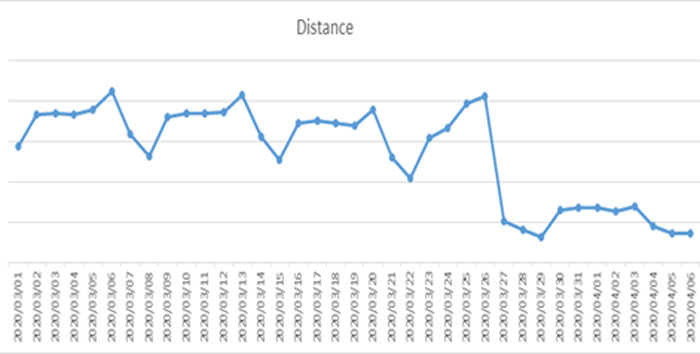
According to Netstar chief technology officer Francois Stols, the average trip length dropped slightly after the lockdown — from just under 12km/day to below 10km/day, as shown in the chart below below.
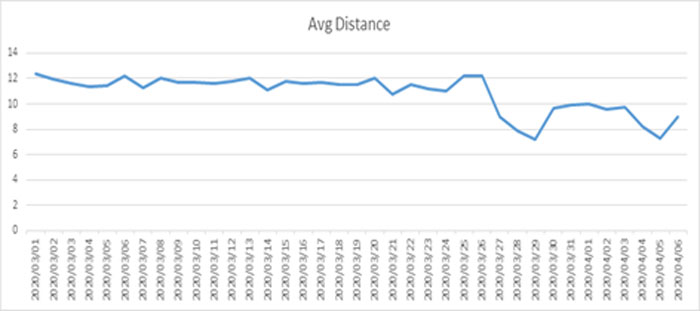
“This could mean that most people travelling after lockdown are essential workers travelling to work and the short trips to the shops by the rest mean a less significant drop in overall trip length,” Stols said.
The largest proportional reduction in the number of trips was in Gauteng and the Western Cape, with trip reductions of more than 50%. The rest of the country only cut back by about 30%, according to Stols.
The number of movements across provincial borders is negligible, but movements between municipalities and towns has halved with mainly essential services workers commuting to their place of work.
Are people staying at home? The two charts below show that the average number of “parked vehicles” (those not driving) on any given day has more than doubled, indicating that two-thirds of vehicles are off the roads, Stols said.
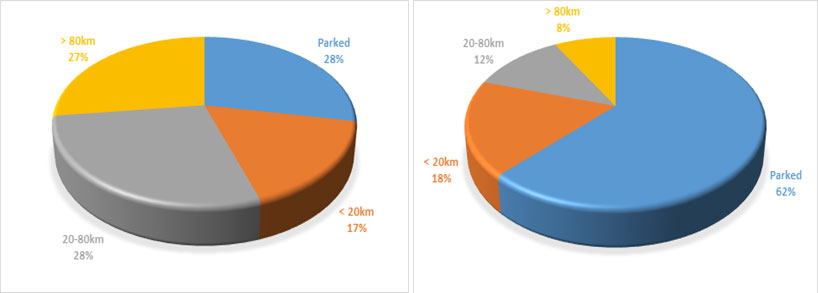
The number of long trips (of more than 80km) dropped to a third of what they were before lockdown, suggesting that people are staying local.
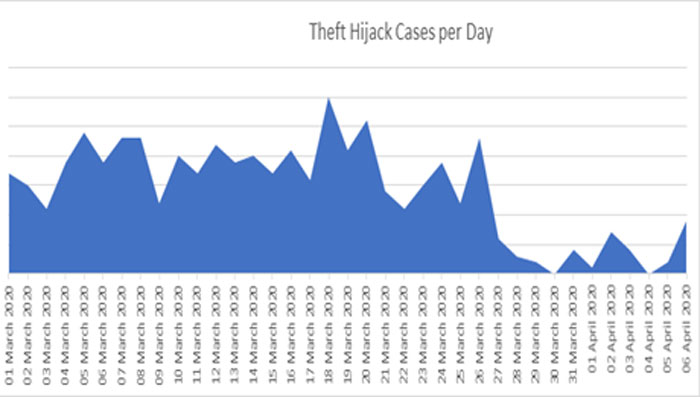
Vehicle crime — theft and hijackings — have also plummeted. They fell to zero on 30 March — “the first time we have ever recalled such levels in 25 years of operation, but unfortunately it seems the criminals are starting to become bolder again”, Stols said.
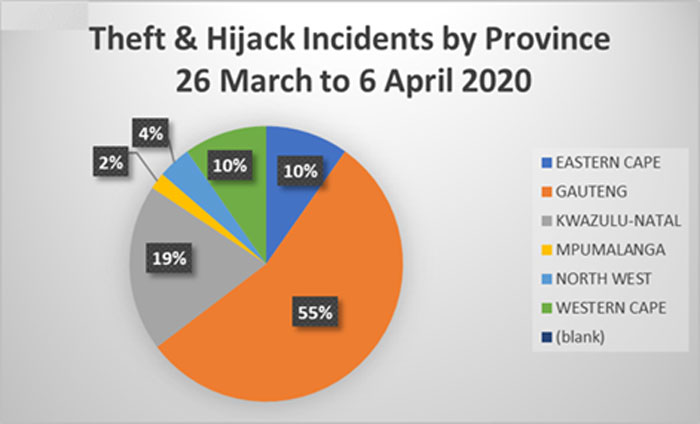
“Although we did not record that many theft and hijack cases during the first week of lockdown, the cases that we did have were predominantly around the Gauteng area.”
Netstar rival Tracker, meanwhile, said its vehicle tracking data and analytics, from data analytics firm Lightstone, indicate that most South Africans are doing their bit to “flatten the curve”.
“Nationally, South African vehicle activity had already dropped by up to 20% before the lockdown, relative to the corresponding day in early March. Vehicle activity has subsequently plummeted by 75% after the implementation of the lockdown,” it said.
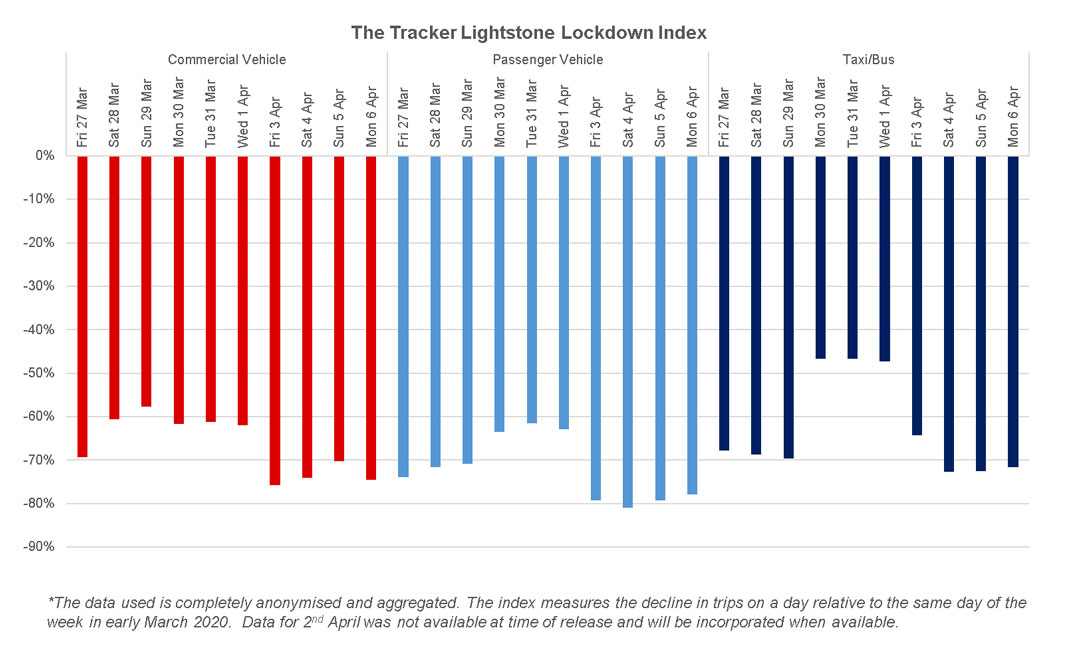
“The significant decline in vehicle movement during the first three days of confinement followed a slight increase in passenger vehicle activity in the two days prior,” it said.
“This increase in vehicle movement is likely due to citizens shopping in preparation for being confined to their homes with many having been paid on the 25th, as observed by the reports of lengthy queues and sold out stock at stores in the days before lockdown.”
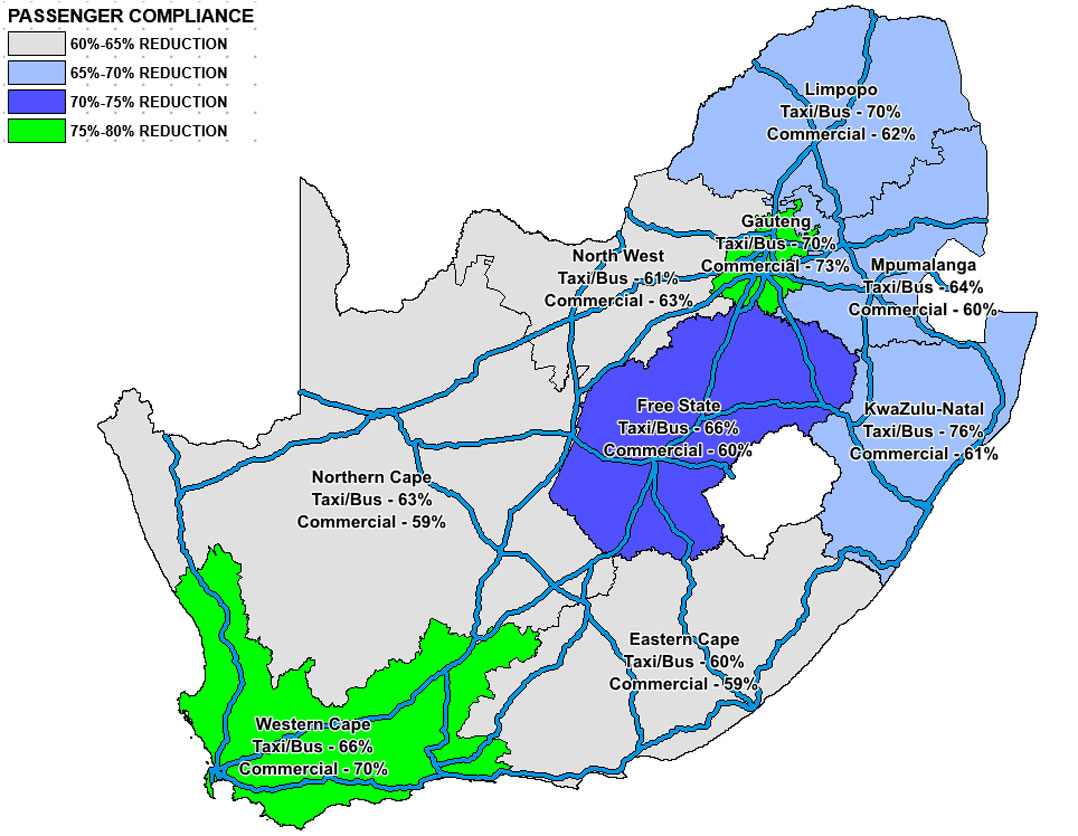
Provincially, Gauteng and the Western Cape demonstrated the highest compliance for staying off the roads, with passenger vehicle activity reducing between 75% and 80% during the first two days of lockdown.
The highest compliance from taxis and buses was observed in KwaZulu-Natal with a 76% reduction in vehicle movement, while the highest reduction in the movement of commercial vehicles was observed in Gauteng at 73%, Tracker and Lightstone said in a statement last weekend.

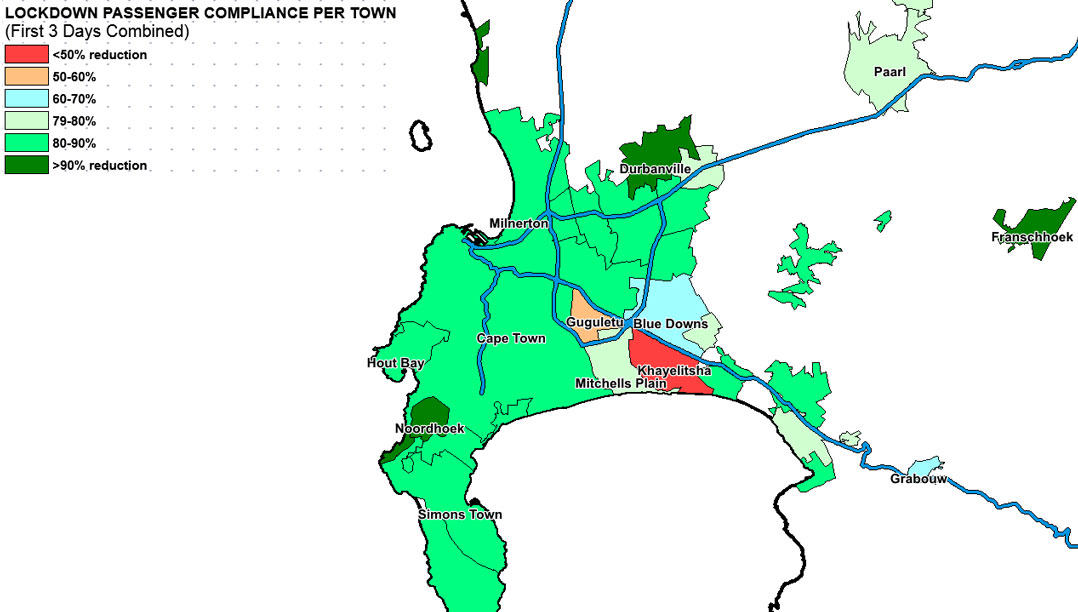
Sandton in Gauteng and Durbanville, Franschhoek and Noordhoek in the Western Cape showed a greater than 90% reduction in vehicle movement, they said.
Conversely, the least stay-at-home compliance was observed in Khayelitsha and Gugulethu in the Western Cape, with a reduction in vehicle activity of less than 50%. Towns like Blue Downs in the Western Cape and Soweto and Katlehong in Gauteng had also only reduced their vehicle activity by between 60% and 70%, Tracker said. — (c) 2020 NewsCentral Media




